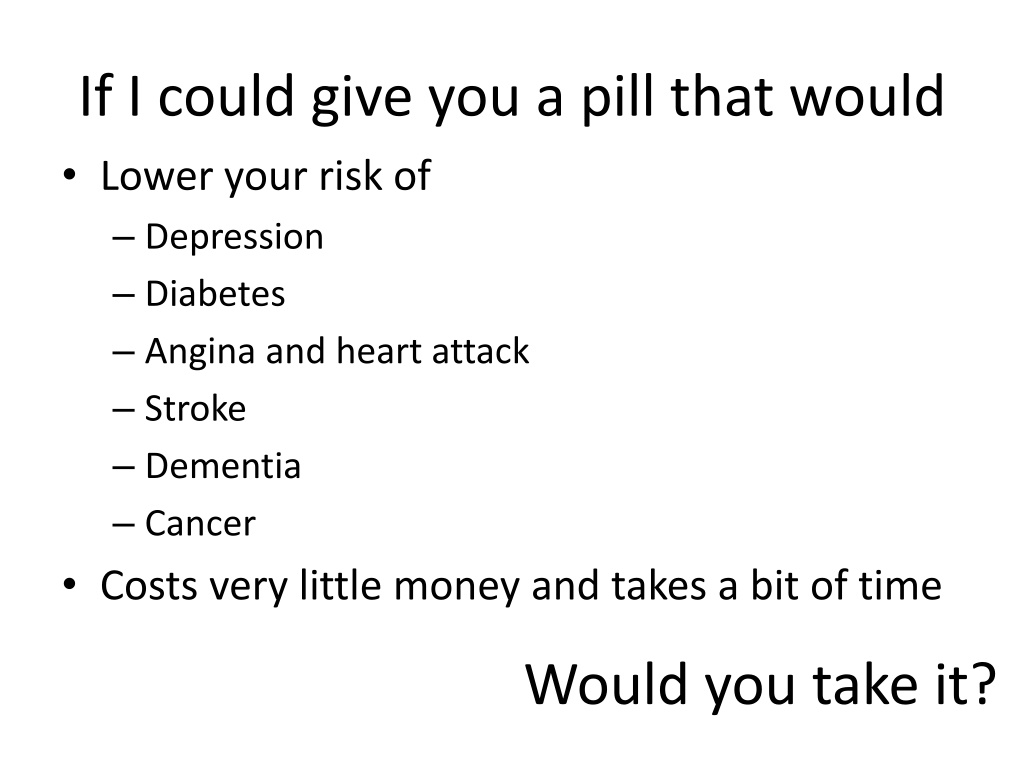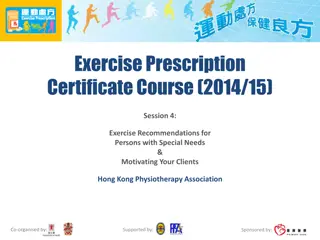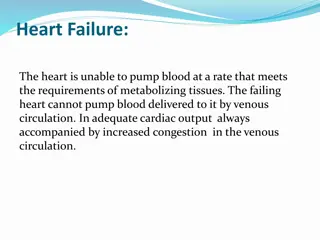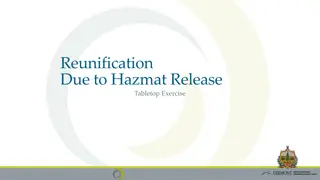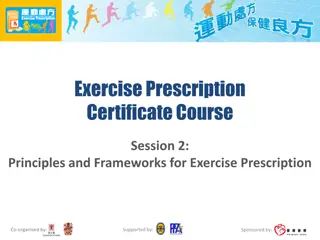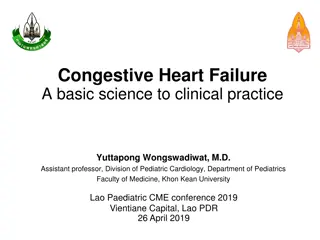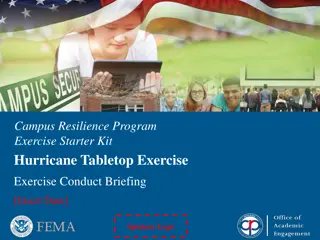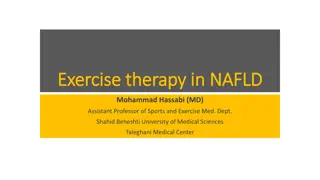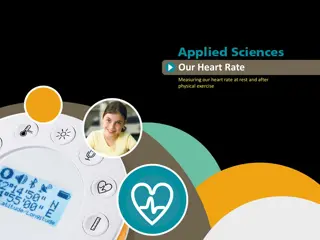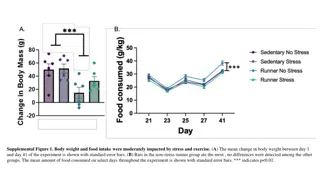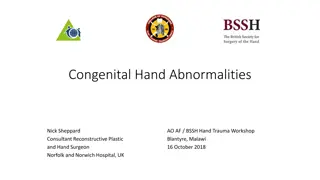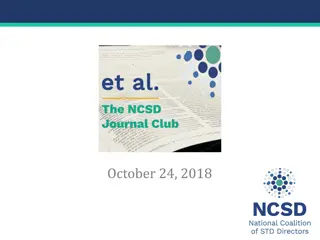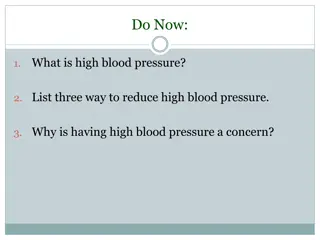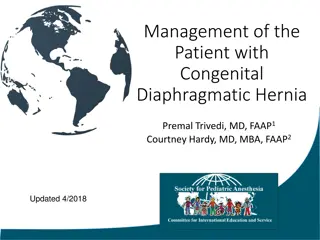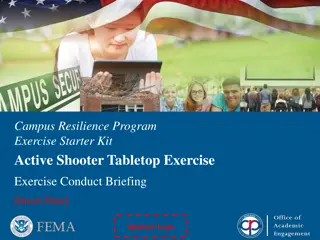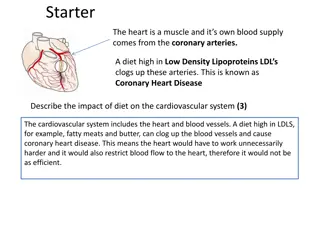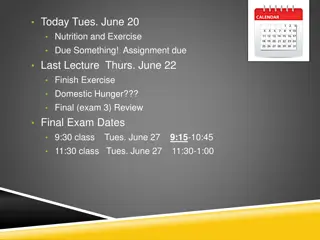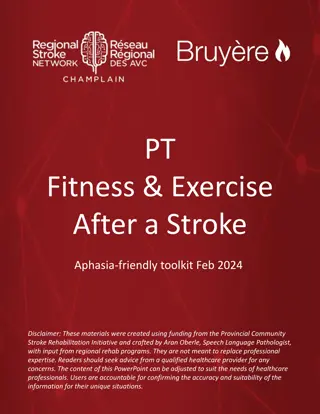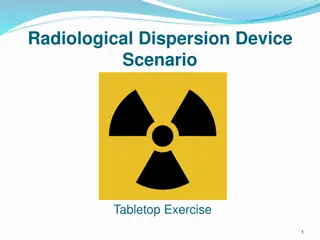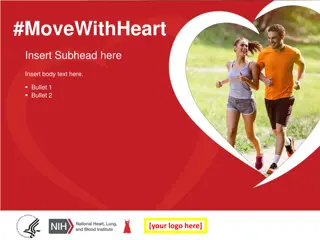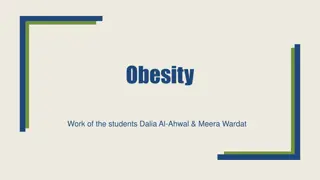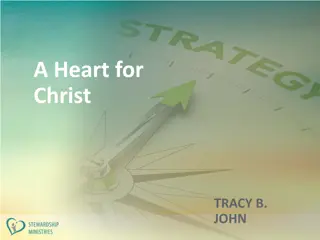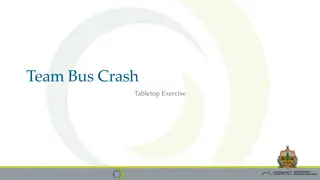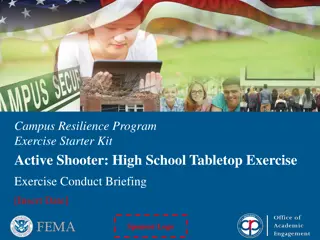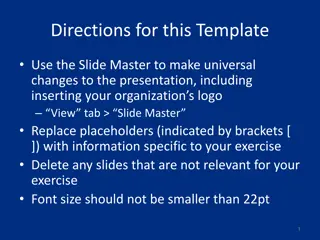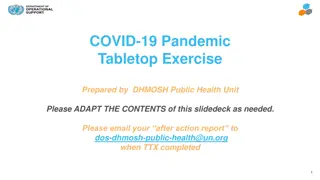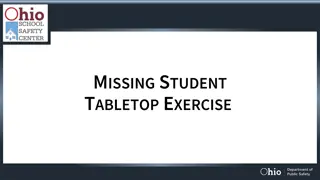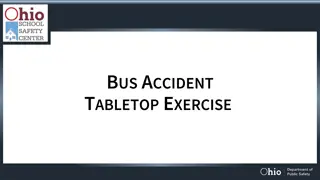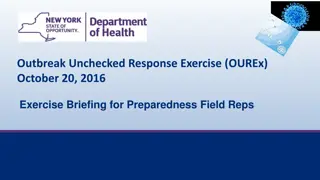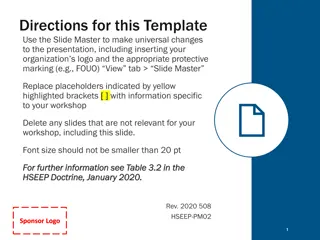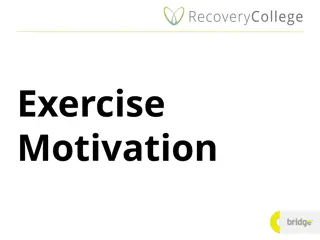Benefits and Risks of Exercise in Congenital Heart Disease
Exploring the definitions of congenital heart disease and exercise, this content delves into the benefits and risks associated with physical activity for individuals with CHD. It highlights the importance of different types of exercise, from dynamic to static, and explains the distinctions between moderate and vigorous activities. Understanding these concepts can help in creating effective exercise prescriptions tailored to individuals with congenital heart disease.
Download Presentation

Please find below an Image/Link to download the presentation.
The content on the website is provided AS IS for your information and personal use only. It may not be sold, licensed, or shared on other websites without obtaining consent from the author. Download presentation by click this link. If you encounter any issues during the download, it is possible that the publisher has removed the file from their server.
E N D
Presentation Transcript
If I could give you a pill that would Lower your risk of Depression Diabetes Angina and heart attack Stroke Dementia Cancer Costs very little money and takes a bit of time Would you take it?
Benefits and Risks of Exercise in Congenital Heart Disease Dr Dirk G Wilson UHW and CHfW
In the next hour... Definitions Look at general exercise advice Benefits of exercise Relate this to individuals with CHD Exercise prescription
Definitions Congenital heart disease An abnormality of cardiovascular development leading to problems with heart structure (and often function) that can affect the individual at any stage from fetal to adult life The most common congenital abnormality affects ~1% of live births
Definitions Exercise Any bodily activity that enhances or maintains physical fitness and overall health and wellbeing Competitive sport An activity involving physical exertion and skill in which an individual or team competes against another (with the intention of winning!) High intensity physical training Contact sport A sport in which the participants necessarily come into bodily contact with one another NB Deliberate vs accidental
Definitions Dynamic exercise Joints moving using relatively small forces within the muscle Examples include walking, swimming, easy cycling Static exercise Relatively large muscle forces with little joint movement
Definitions Moderate activity Raises your heart rate and makes you sweat You can still talk, but you cannot sing the words to a song Vigorous activity Makes you breathe hard and fast If you are working at this level, you will not be able to say more than a few words without pausing for a breath
What this means Moderate Vigorous 5-18 year old Adult 5-18 year old Adult Walking to school Brisk walking Playing chase Jogging/running Playing in the playground Water aerobics Energetic dancing Swimming fast Riding a scooter Doubles tennis Swimming Singles tennis Skateboarding, Rollerblading Skateboarding Running Skipping rope Rollerblading Hiking Gymnastics Aerobics Walking the dog Pushing a lawn mower Football, Rugby Football, Rugby Cycling on level ground or ground with gentle hills Cycling on level ground or ground with gentle hills Cycling fast or on hilly terrain Cycling fast or on hilly terrain Volleyball, Basketball Martial arts Martial arts Netball, Basketball One minute of vigorous activity provides the same health benefits as two minutes of moderate activity
Benefits of Exercise Being physically active can help you lead a healthier and happier life Lower risk of Ischaemic heart disease Type 2 diabetes Stroke Some cancers
Benefits of Exercise Improves Self-esteem Mood Sleep quality Energy levels Reduces Stress levels Depression Risk of dementia / Alzheimer s disease
General advice about exercise 5 to 18 year olds: To maintain a basic level of health, children and young people need to do: At least 60 minutes of physical activity every day a mixture of moderate activity and vigorous activity is best On three days a week, these activities should involve exercises for strong muscles, such as push-ups, and exercises for strong bones, such as jumping and running Screen time <2 hours per day
Adults 19-64 Years Should Do At least 150 minutes of moderate aerobic activity such as cycling or brisk walking every week, and Strength exercises on two or more days a week that work all the major muscles (legs, hips, back, abdomen, chest, shoulders and arms) 75 minutes of vigorous aerobic activity, such as running or a game of singles tennis every week, and Strength exercises on two or more days a week that work all the major muscles (legs, hips, back, abdomen, chest, shoulders and arms) OR
Strengthening Exercises Lifting weights Working with resistance bands Doing exercises that use your own body weight, such as push-ups and sit-ups Heavy gardening, such as digging and shovelling Yoga
And... All adults should also break up long periods of sitting with light activity. Studies have linked excessive sitting with Being overweight and obese Type 2 diabetes Some types of cancer Early death Sitting for long periods is thought to slow the metabolism affects the body's ability to regulate Blood sugar Blood pressure Break down body fat
But hang on.... I have a heart condition!
Fears I might damage my heart I might provoke a heart rhythm problem I might die
Reassurance Studies have shown that there is a negligible risk of sudden death due to physical activity in children or adults with CHD Of (competitive) sports-related deaths, only 3 in 100 are due to congenital heart disease
Considerations Some individuals will have a higher risk of an exercise-related problem than others Known heart rhythm problems, particularly VT Known poor function of the main pumping chamber Pulmonary hypertension Known severe aortic enlargement Known severe valve narrowing (stenosis) Known exertion-related syncope (black out) Low oxygen saturation levels On anticoagulants (warfarin or similar) Pacemaker / ICD patients
Medical Assessment of Risk History and examination ECG Echocardiography and other imaging Cardiopulmonary exercise testing A 4 A 1 A 2 A 3
Specific Advice Severely reduced heart function AHA recommends Enjoy a wide range of recreational sport and physical activity opportunities Limiting involvement in competitive sport May 2013
Specific Advice Important pulmonary hypertension Severe valve obstruction to participate Should participate in non- competitive activities that have low to moderate dynamic and static components Curling Baseball/softball Golf Tai chi Walking Bowling or bowls Cricket Bocce
Specific Advice Enlarged aorta Certain forms of CHD (ToF, truncus, after Ross operation, BAV) Inherited, e.g. Marfan syndrome and related conditions Activities of moderate intensity are generally safe Resistance/static-type exercises such as weight lifting can be done but not to the point where you have to hold your breath and strain light repetitions is better
Recent Evidence Aortic growth in Marfan syndrome and AAA is slower in patients taking regular exercise
Patients with Hypoxia Context: Complex palliated disease, e.g. single ventricle, e.g. fenestrated Fontan Eisenmenger syndrome (high resistance in lung blood vessels) Effort may lead to increasing cyanosis Exertion-related hypoxia generally does not require activity restriction, because the increasing hypoxia will usually restrict activity to an appropriate level. Individuals with cyanosis should be physically active within comfortable limits they should listen to their body and realise when to slow or stop The talk test (ie, activity at an intensity that permits easy conversation with others) may be a helpful tool for individuals to guide their own activity intensity Think about altitude and take it easier if visiting mountainous areas
Syncope (Blackouts) Causes should be investigated thoroughly and treated, where necessary Individuals with a history of syncope (or who are at high risk) should be encouraged to participate in activities such as Walking Racquet sports Football Cricket Table tennis Dancing Tai chi Yoga Bowls or bowling Caution Swimming Cycling Ice skating Skiing Avoid Horseback riding Gymnastics Rock climbing Scuba diving Always have a plan about First aid provision Who to contact Informing the health care team if symptoms worsen
Anticoagulation Anticoagulation poses a small risk of bleeding injury with activity Activities with low risk of impact should be encouraged Walking Jogging Swimming Cross-country( level ground!) Slightly riskier, but still OK are Skiing Bike riding Volleyball Basketball Netball Cricket with adequate protection Avoid activities in which body impacts are an intentional aspect of the sport Tackle rugby Combative martial arts Boxing Ice hockey Competitive football (I know some patients who do 5-a-side, or who play in goal)
Device Pacemaker, ICD Consideration: Protection of the device from forceful impact Beware Rugby Cricket Football Ice hockey
Try it! Find something that you enjoy and make time for it Convert car to cycling or walking for some journeys Have exercise breaks if you have an office job (or exercise at your desk) See https://www.nhs.uk/livewell/fitness/Pages/Fit nesshome.aspx (search NHS exercise )
Target 2 -2 hours of moderate physical activity per week 3 days a week do some Sit-ups Push-ups Thrusts The more you do, the more you can do You will be happier and live longer
